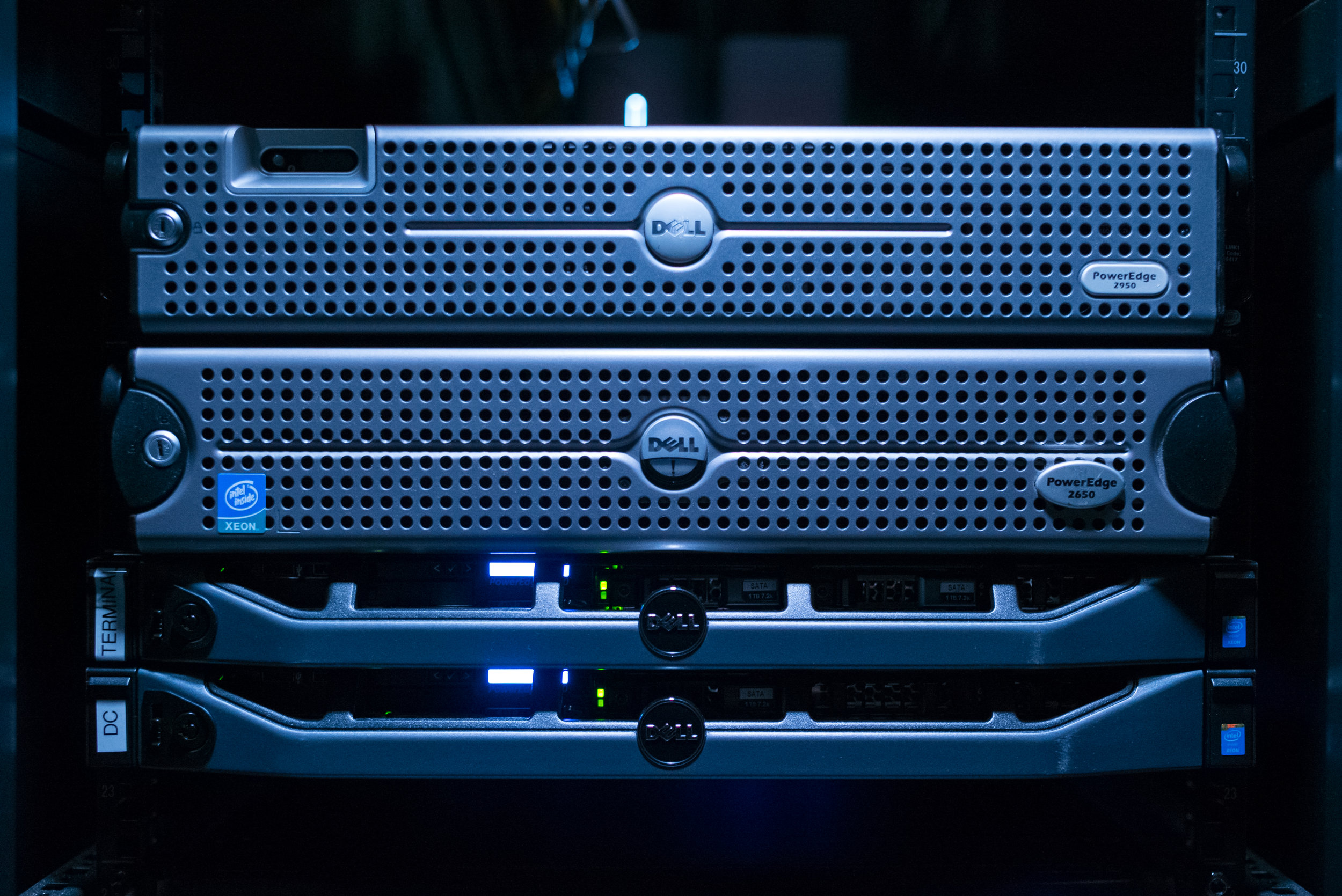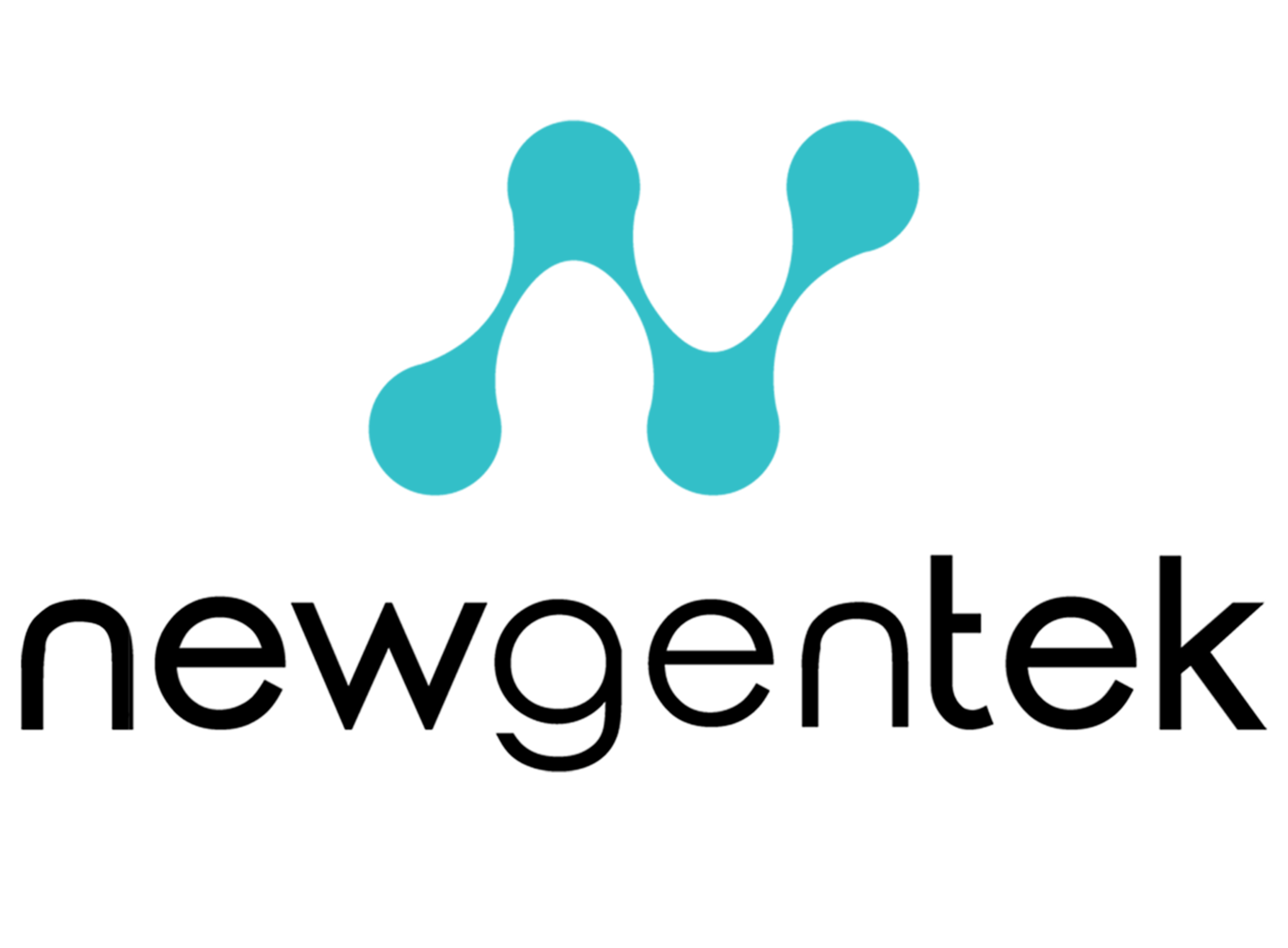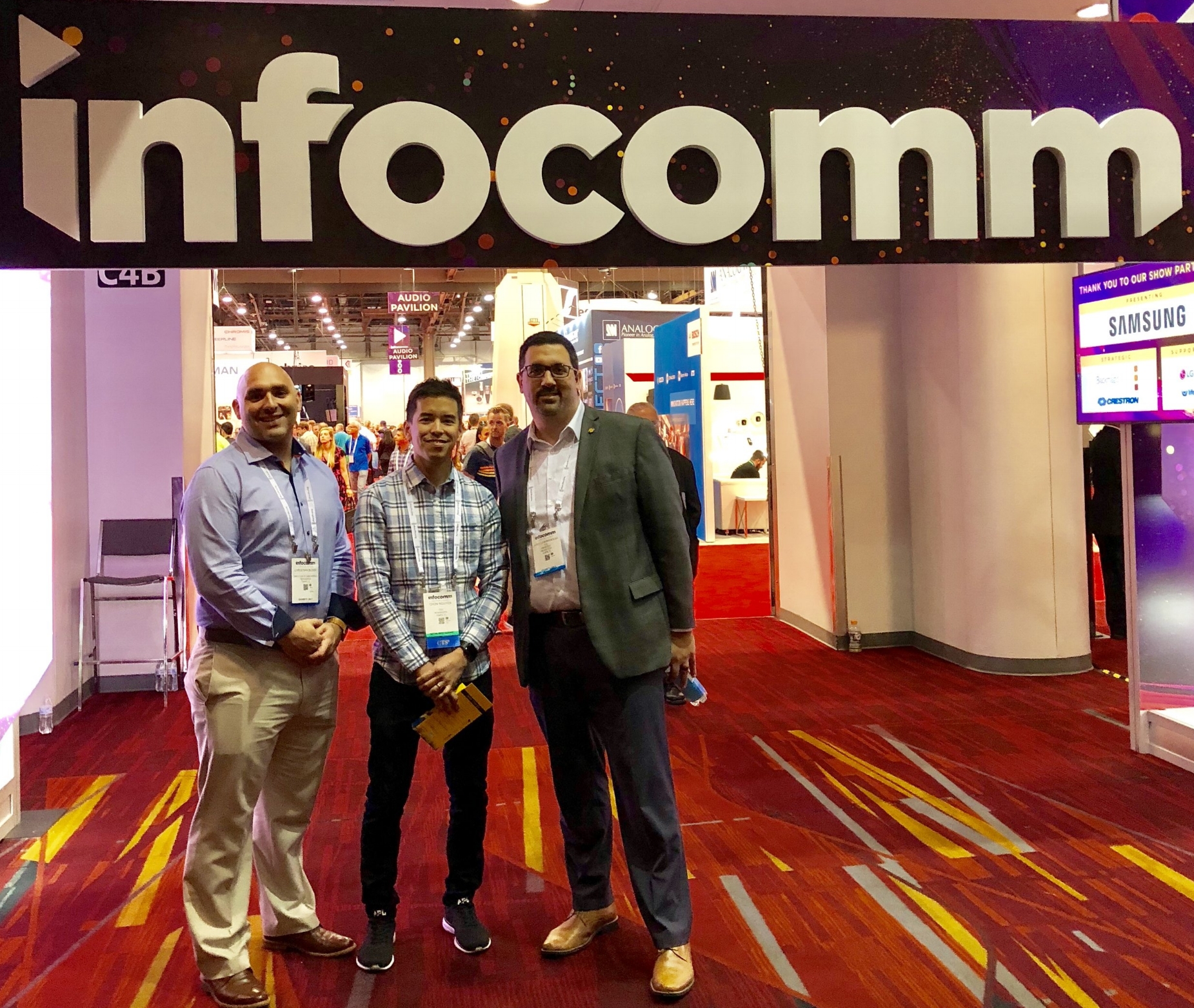
NEWGENTEK BLOG
Managed Services - Workplace Technology - Outsourced IT Support
Don't Cut Corners with your Office Technology
Setting up a functional and effective office space takes a lot of hard work. Not only do you have to find the right space in the right location, but a lot of planning and execution is necessary to set it up in the right way.
Setting up a functional and effective office space takes a lot of hard work. Not only do you have to find the right space in the right location, but a lot of planning and execution is necessary to set it up in the right way. From conference room and huddle space technology to room scheduling and sound masking, there are many ways to make your office space work for you. Taking the time during the planning stages of your new office to plan for your AV and IT needs is key.
How important is technology in the workplace?
Microsoft created a report this year on technology in the workplace, Digital culture: Your competitive advantage, which canvassed opinions from 20,476 workers in large and small businesses. Microsoft sought information on the technology in use in these businesses, and workers' attitudes to their jobs and their performance. They concluded that the stronger the digital culture, the lower the percentage of employees who feel unproductive, lacking innovativeness and short on empowerment. Technology is important in the workplace, and the culture around that technology is even more important.
It can be difficult for business owners to spend enough time planning for the digital part of their workspace. We are a technology company, and when we first moved into our office, our first priority wasn’t exactly getting our office technology perfect. Our first priority was to serve our customers without causing downtime. We were the shoemaker without shoes! (Our office technology is pretty awesome now by the way)! But a lot of the time technology is an afterthought. Displays, speakers, and video conferencing software are added to meeting rooms, only to realize the software and hardware solutions don’t integrate seamlessly with the IT infrastructure.
Hire an AV company like you would hire a general contractor
When you plan to move into a new office space, you hire a general contractor to help manage the project and all of its moving parts. They are with you from conception to completion, and make life easier for you. The same is true for hiring an established AV company that knows how to not only design a properly engineered solution, but also knows how to integrate AV hardware with your IT infrastructure. We work with our corporate customers to improve their office space functionality from the design phase, to installation, to supporting that solution after-the-fact. There is a lot of crossover between networking, telecom, video conferencing, AV hardware, cabling, etc. All of these pieces need to talk to each other in order to have a seamless AV solution.
Many times we meet with customers because they’re office technology isn’t functional or efficient. How much time have you wasted during a presentation with remote clients or colleagues because of a shotty network connection or poor quality audio? We usually find out that the AV technology was piecemealed together without taking into consideration how it would talk to the rest of the technology in the office.
Conference Rooms & Huddle Spaces
As more millennials enter the workforce, employers are faced with creating a technology-heavy environment that supports a growing desire to work remotely. Randstad US, a global staffing company, recently released results from its quarterly Randstad Workmonitor survey that showed:
Sixty-six percent of workers say they like the option of occasionally working from home or another location.
A third of employees disagree that their employers provide the necessary technical equipment to enable them to work from home.
Thirty percent of workers say they regularly have online or virtual team meetings via video conferencing
This just goes to show that video conferencing solutions and investments in unified communications in the office are becoming extremely important. A good unified communications platform (this is everything from internal chat platforms, telecom, video conferencing, etc.) should allow you to:
Attract top talent to work for you
Create an environment where communications amongst your team members is easy and functional
Facilitate project management
Create an easy way to share content with your team and clients
Help you close more business
Whether discussing a project with a prospective client or having a virtual meeting between teams in different remote locations, the systems that are supporting these communications need to be functional.
Plan for the office of the future
We help our customers anticipate their future technology needs, whether that is estimating their employee growth (hiring more people, opening more locations) or growing their business to a national or global scale. Your office technology is important. Let us help you plan, design, and integrate your systems so that your team can be more productive and communicate easily!
Infocomm 2018 Recap!
InfoComm 2018 occurred last week, Wednesday, June 6th thru Friday, June 8th in Las Vegas, NV.
InfoComm 2018 occurred last week, Wednesday, June 6th thru Friday, June 8th in Las Vegas, NV.
InfoComm 2018 is the largest professional audiovisual trade show in the United States, with thousands of products for audio, unified communications and collaboration, display, video, control, digital signage, home automation, security, virtual reality and live events.
InfoComm provides integrators with a unique opportunity to meet with 1,000 exhibitors, thousands of products, and 44,000 attendees from 110 countries.
For the past 10+ years InfoComm has alternated between Las Vegas, NV and Orlando, FL. The change in geography gives integration partners and end users an opportunity to attend the trade show with at least a bi-annual frequency, however for the Newgentek team, InfoComm is a ‘must go’ each year. Here's why.
InfoComm provides Newgentek with the ability to see cutting edge technology and schedule meetings with our key vendor partners. As highlighted in our Mission Statement, our company is built on Strategic Partnerships - which are made up of our employees, customers and key vendors.
The theme this year seemed to be "more with less". Here is a review of specific technologies we noticed during our booth tours:
Video Conferencing / Huddle Room Solutions:
- Gone are the days of dedicated hardware video conferencing solutions for institutions. Companies like Zoom who partner with Logitech and Crestron provide a soft codec experience and are changing the game. Click here to learn more about Zoom.
- Logitech provides numerous feature-rich camera options like Meet-Up or Rally to provide crisp video and clear audio for users to communicate from one office in America to another in Europe.
- Crestron has continued to modify their Mercury solution that ties directly into the Zoom Platform for ease of configuration and allow room users to have their content shared on the screen within moments of arriving. Want more information on Crestron's Mercury solution? Click here.
Audio Solutions:
- The JBL Brand within the Harman family continues to be a household name. This year they showcased their 2x2 Ceiling Speaker. The benefit to this speaker is the un-intrusive appeal. Most rooms use the 2x2 Ceiling Tile pattern, and the LCT 81C/T drops directly into an open 2x2 tile and provides that brilliant JBL sound. Click here to learn more.
- Sonance hit a home run with speaker appeal with the Professional Series PS-P63T. It’s a 70V/100V/8 Ohm selectable Pendant Speaker that utilizes a minimalistic design similar to pendant lighting to blend discreetly into the environment.
Eye-Catchers:
- Samsung showcased their Fl!p board, a digital white board device that provides collaboration within Huddle Rooms, Boardrooms and Conference Rooms. When the room users have all of their information on the board, instead of taking a picture of the board, the content can be emailed directly to meeting attendees. One more nice feature is the ability for the Fl!p to be used in landscape or portrait format.
For the Newgentek team, we returned from InfoComm energized about where the professional audiovisual industry is headed. We are excited to meet with our key customers to share the ways we can incorporate technology in an easy to use format, with a focus on how we can increase their productivity.
The countdown begins to InfoComm 2019, June 12th thru June 14th in Orlando, FL!
What is a Huddle Space?
Wainhouse Research estimates there are currently 30 to 50 million Huddle Spaces in offices worldwide. With research showing the number of Huddle Spaces on the rise, you may be wondering, what is a Huddle Space exactly? Here’s our take on Huddle Spaces…
Wainhouse Research estimates there are currently 30 to 50 million Huddle Spaces in offices worldwide. With research showing the number of Huddle Spaces on the rise, you may be wondering, what is a Huddle Space exactly? Here’s our take on Huddle Spaces…
As recent as 2010, the options for meeting rooms ranged from a 16-person conference room to an executive office, but nothing in between. Fast forward eight years and depending on who you ask, a Huddle Space could be as formal as a small four- to six-person conference room or a gathering location at a popular coffee house. What has become the common denominator for this type of space is the ability for an informal, impromptu collaboration where one employee can say to another ‘come take a look at this diagram’ or ‘let’s review this spreadsheet’.
So, next you may find yourself asking, what does a Huddle Space need to provide? The main three requirements for Huddle Space are:
1. Flexibility – organizations strive for rooms to be Activity Based Workspaces or ABW. This allows teams to gather around a circular table on Wednesday and then convert that to a standing environment on Thursday without including facility management.
2. Collaboration – as desktop computers became laptops and as laptops now become tablets, the trend has moved to ‘smaller is better’. Which is a key component, but how do we share content? With 95% of Americans owning at least one smart device, the ability to transmit data and audio from users’ tablets, laptops or smartphones to a collaboration device continues to drive the use for technology.
3. Simplicity – over 20% of meetings start more than 15 minutes late due to technology issues. Time costs money…various Fortune 50 organizations estimate the cost of poorly managed meetings cost over $75 Million Dollars per year. Room users strive to enter a room and have their content loaded on the screen upon their arrival. It must be simple!
Organizations seem to be moving away from larger conference rooms in favor of Huddle Spaces from a real estate standpoint. For example, where 500 square feet used to occupy two large conference rooms, that same square footage can now occupy five Huddle Spaces. This allows for more efficient use of your organization’s real estate, making the Huddle Spaces more than twice as productive than your traditional large conference room.
We’ve now discussed how simple, flexible, and collaborative Huddle Spaces can be – the final question is what do these spaces cost. Great news here as well! Huddle Spaces save money. They are much less expensive and less intrusive to outfit than large conference rooms.
With Huddle Spaces on the rise through corporate and enterprise organizations, let Newgentek show you how easy it is to transfer small, unused spaces into productivity zones!


